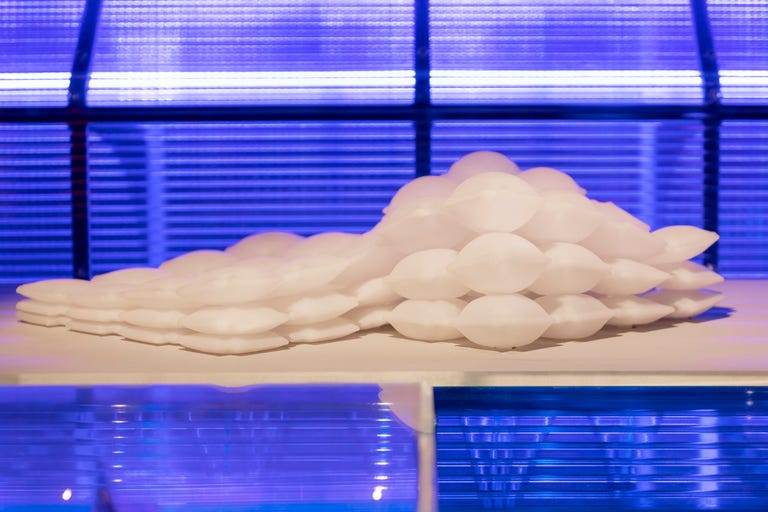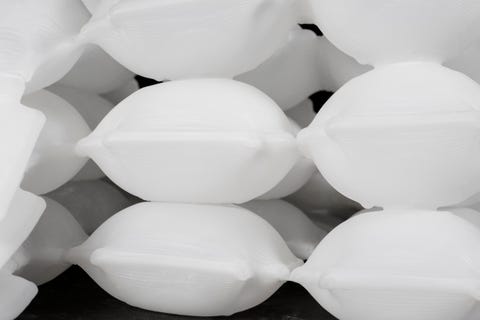This Stretchy, Inflatable Material Could Build the Cars of the Future
MIT and BMW are researching 3D-printing new forms of air technology that could completely change car interiors.
By Laura Yan
MIT
MIT and BMW are partnering to develop a 3D printed, inflatable, stretchy material that could change car design in the future. Currently, cars already use air in airbags and some seating. But because inflatable objects require a thin, stretchy material that can be difficult to work with, engineers haven't attempted anything too complex or ambitious.
MIT's Self-Assembly Lab is working on a new process called "Liquid Printed Pneumatic" that could change that. A printer will squeeze liquified materials into a vat of gel, where the shape eventually hardens. 3D printers usually work with hard plastics, but in MIT's lab, they were able to print 100 percent silicone rubber into complex forms with clusters of air chambers that can be programmed to inflate or deflate. “It’s programming it with air,” Skylar Tibbits, the co-director and founder of the Self-Assembly Lab told FastCompany. “Instead of zeros and ones, you’re sending different pulses of air.”

MIT
The material looks like it can live and breath, inflating and resting. BMW, meanwhile, have been working on futuristic inflatable car concepts for over a decade. One concept imagines a car with a flexible outer skin that morphs. Another envisions an analog dashboard made out of moving, inflatable surfaces that signal obstacles ahead.
Inflatable materials could mean fully customizable car interiors: seats that can merge and inflate into different orientations and configurations, the ability to program the hardness or softness of your seats, redesigned airbags (of course), and perhaps much more. MIT hasn't revealed exactly how BMW plans to use the new technology, yet, but the possibilities linger just in the distance, inflating and deflating according to researchers' imaginations.
No comments:
Post a Comment